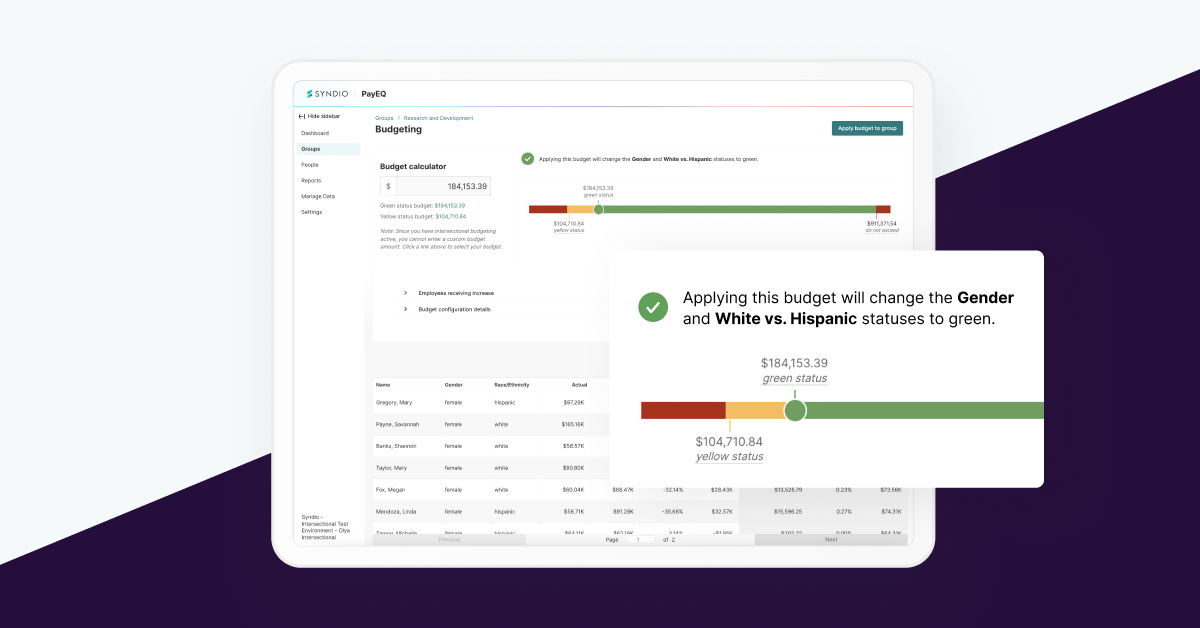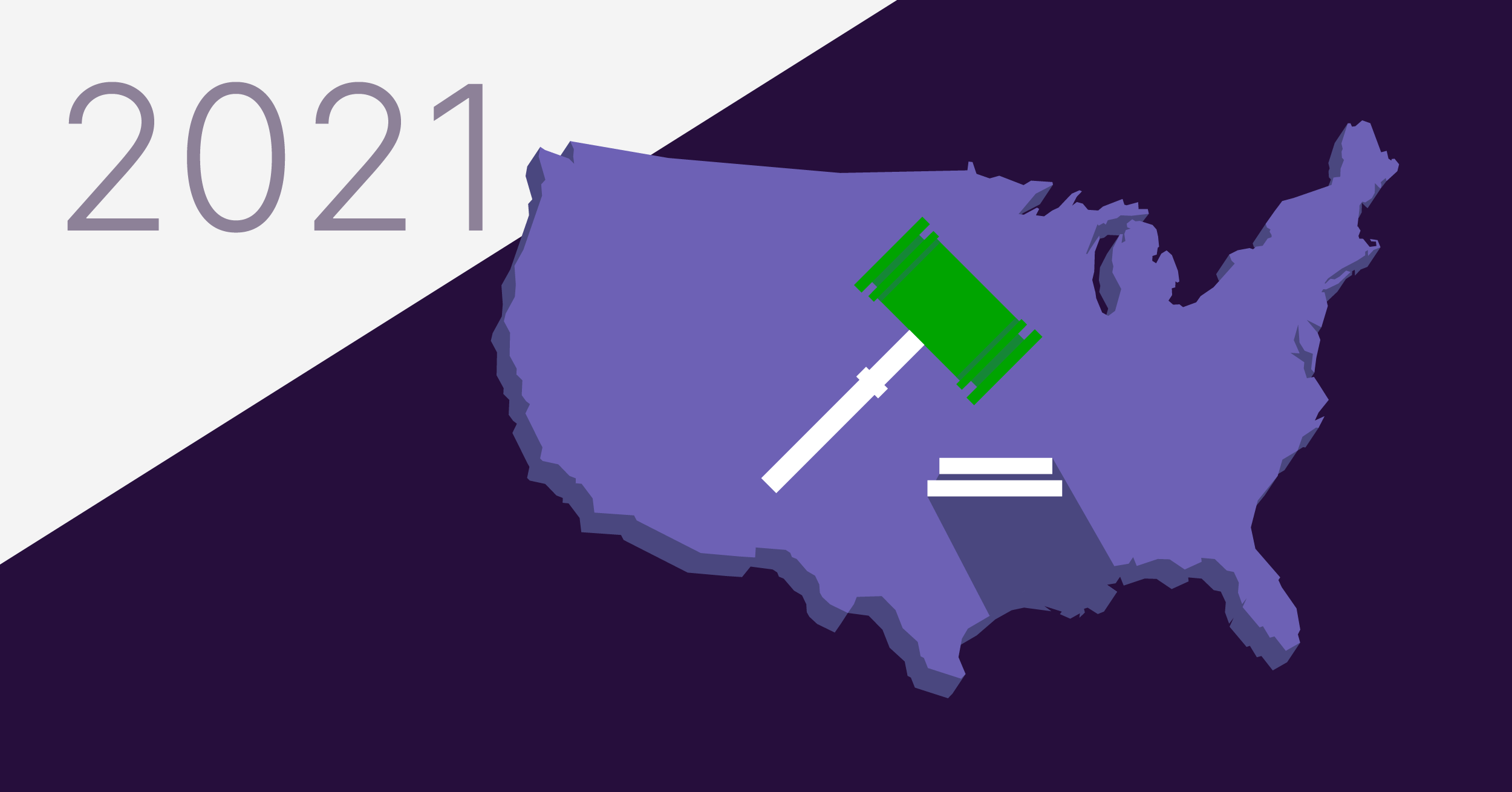As pressures to ensure equity rise on every side — employees, legislators, regulators, investors, consumers — companies struggle to achieve pay parity. Lawsuits related to both gender and race discrimination plague even the best and brightest brands.
The lens of pay equity is expanding beyond gender, as evidenced by the fact that 98% of Syndio’s customers analyze both gender and race. Still, it’s not enough to focus on gender and race alone because the intersection of gender and race is often where the most glaring pay disparities lie. For example, according to Equal Pay Today, Latina women working full-time, year-round in the U.S. typically earn 57 cents for every dollar earned by their white, non-Hispanic male counterparts, which is worse than the pay gap faced by all women (84 cents).
Organizations know they need to invest in their workers — and do so equitably. They need to take meaningful, provable data-driven action to fix pay gaps. PayEQ® lets you do this quickly, cost-effectively, and fairly for every employee identity category, including gender and race. And with the launch of a new Intersectional Budgeting tool in PayEQ, it’s easy to remediate pay inequities for intersectional identity groups as well.
Why intersectional pay equity matters
When it comes to pay gaps, looking only at race and gender separately may overlook nuances of inequities within intersectional groups. For example, in 2023 the pay gap for women compared to the average white man is 84 cents and the pay gap for Black workers is 79 cents, but the pay gap for Black women is 67 cents. As you can see, the pay gap for Black women is much worse than for either of those groups separately.
That’s because Black women have a unique experience in the workplace and face different (often worse) discrimination and inequities than those faced by women as a group or by Black workers as a group. The compounding disparities faced by Black women (and other marginalized employee identity groups) due to the intersections of inequity is sometimes called the “double gap.”
Intersectional pay equity analyses offer a more complete and precise understanding of disparities within a company, as they are less reductive than broader categorical analyses. The importance of adopting an intersectional approach to evaluating workplace equity is gaining traction. Syndio’s 2023 Workplace Equity Trends Report found that companies in the U.S. are increasingly conducting intersectional analyses of race and gender in addition to analyzing each separately. Our survey found that:
- 52% of organizations now include intersections of gender and race in their pay equity analyses
- 38% of companies are conducting intersectional analyses for some form of workplace equity analyses
How intersectional budgeting in PayEQ works
For businesses that want to prioritize workers and mitigate legal risk by fixing pay inequities related to gender and race, the budgeting tools in Syndio’s PayEQ makes intersectional remediation comprehensive, efficient, and simple.

Within PayEQ, comparisons evaluate pay between a reference and a comparison group, (e.g, between men and women or between white employees and Black employees). You can set up multiple comparisons to review different groups.
The budget feature provides suggestions for increasing the compensation of employees whose protected class has a significant pay gap. You can budget up to seven gender and race comparisons simultaneously to get a single budget for all. Relevant intersections between comparisons are included.
The algorithm calculates increase suggestions in order of magnitude and then trims them so the new budget is precise, addressing issues with a method both fair and cost-effective. It gets each of the comparisons to your desired status (green or yellow), while also ensuring new significant gaps aren’t introduced.
The “Budget configuration details” table (previewed below) shows you the current status of compared groups, so you can see which comparisons and intersections are problematic. You can then view impacted employee demographics and their related budget amounts for remediation.
An all-in-one, all-at-once solution for intersectional pay equity
When it comes to pay equity, methods matter. Other pay equity solutions take the easier, riskier route when it comes to addressing intersectional pay disparities, using an “all-up fixed effects model” (i.e. one containing all employees that controls for something like their job title or functional area). This type of model might check a box, but is imprecise — and indefensible. It can hide some pay disparities while enlarging others, potentially overlooking people who deserve pay increases. Also, this type of model is not commonly relied upon when employers have to defend their pay equity work in court.
Syndio has the highest standards for our math and models, using the most precise methodology to remediate. By design, Syndio’s remediation eliminates statistical significance. PayEQ runs analyses and remediation group by group, and uses methodology compliant when defending a lawsuit. Our method also realistically accounts for the potential interrelationships among pay policies and protected class status, accounting for differences in how employees are treated in the workplace. PayEQ enables companies to resolve pay disparities with:
- Accuracy — Syndio takes no shortcuts when it comes to resolving intersectional pay disparities. We factor gender, race, and the intersection of the two into every budgeting recommendation. (It’s complex math, but worth every gain in accuracy!)
- Precision — Most pay equity solutions run one regression model for all employees. PayEQ runs a separate regression on each substantially similar group of employees, complete with custom controls for each. When it comes time to budget for disparities, your spend is precisely tailored.
- Speed — PayEQ can budget up to seven protected gender and race categories simultaneously. You might think a more comprehensive remediation method means more steps, more work, and less control. Not with PayEQ! Calculate a budget that addresses both gender, race, and intersectional issues with a button click. The software does all the hard work under the hood.
Applying an intersectional lens to workplace equity efforts benefits everyone in the workplace. Companies working to remediate disparities for their most marginalized, at-risk, and underrepresented intersectional employee groups will improve equitable outcomes for entire cross-sections of their workforce. Which adds up to a better, fairer workplace for us all.
Want to see PayEQ or our full Workplace Equity Analytics Platform in action? We’d love to show you.
The information provided herein does not, and is not intended to, constitute legal advice. All information, content, and materials are provided for general informational purposes only. The links to third-party or government websites are offered for the convenience of the reader; Syndio is not responsible for the contents on linked pages.





